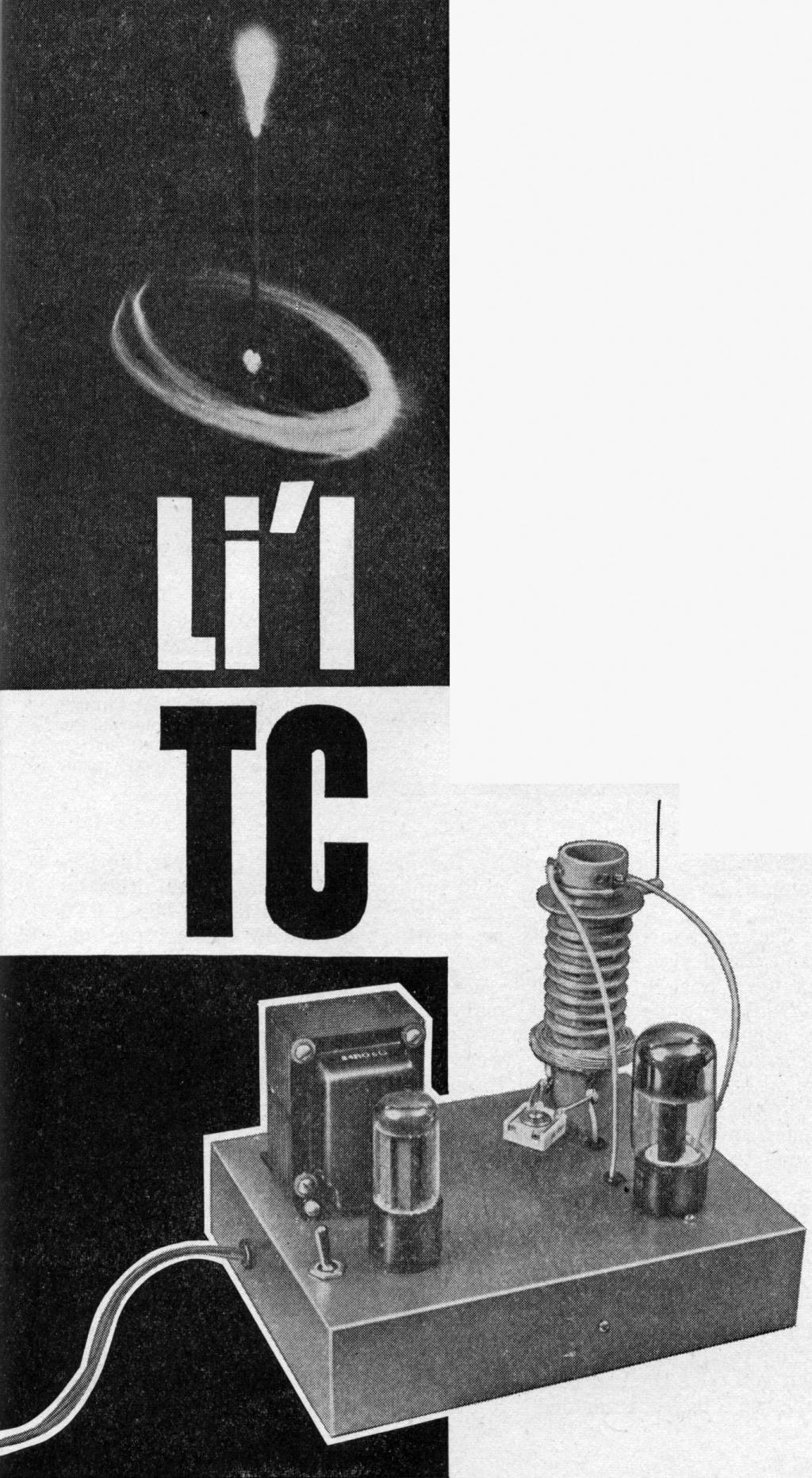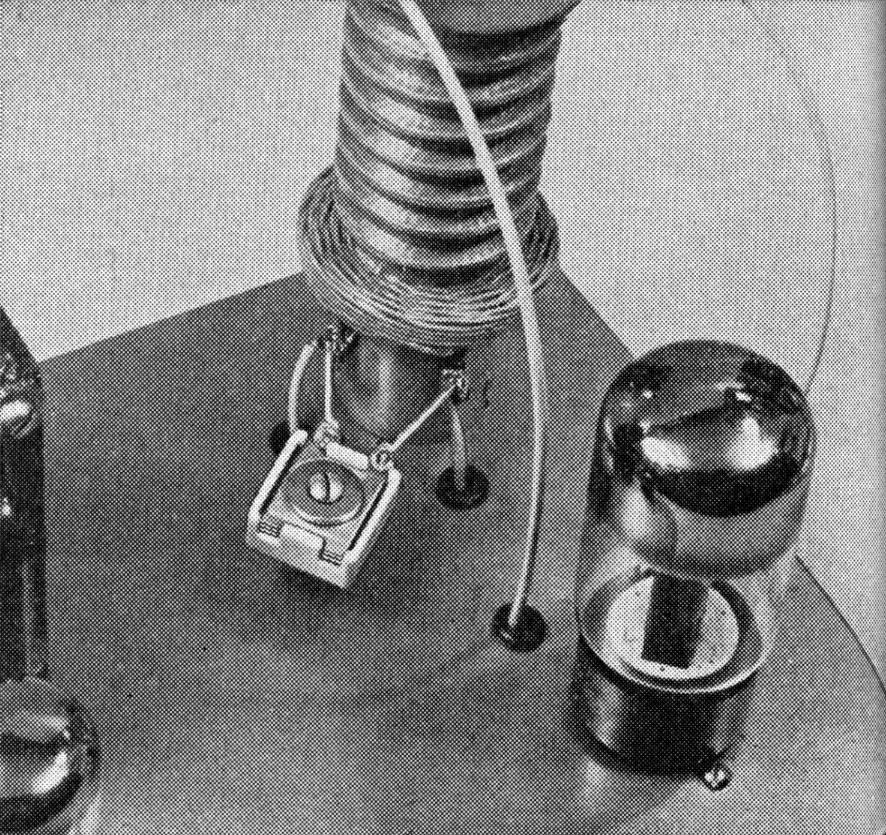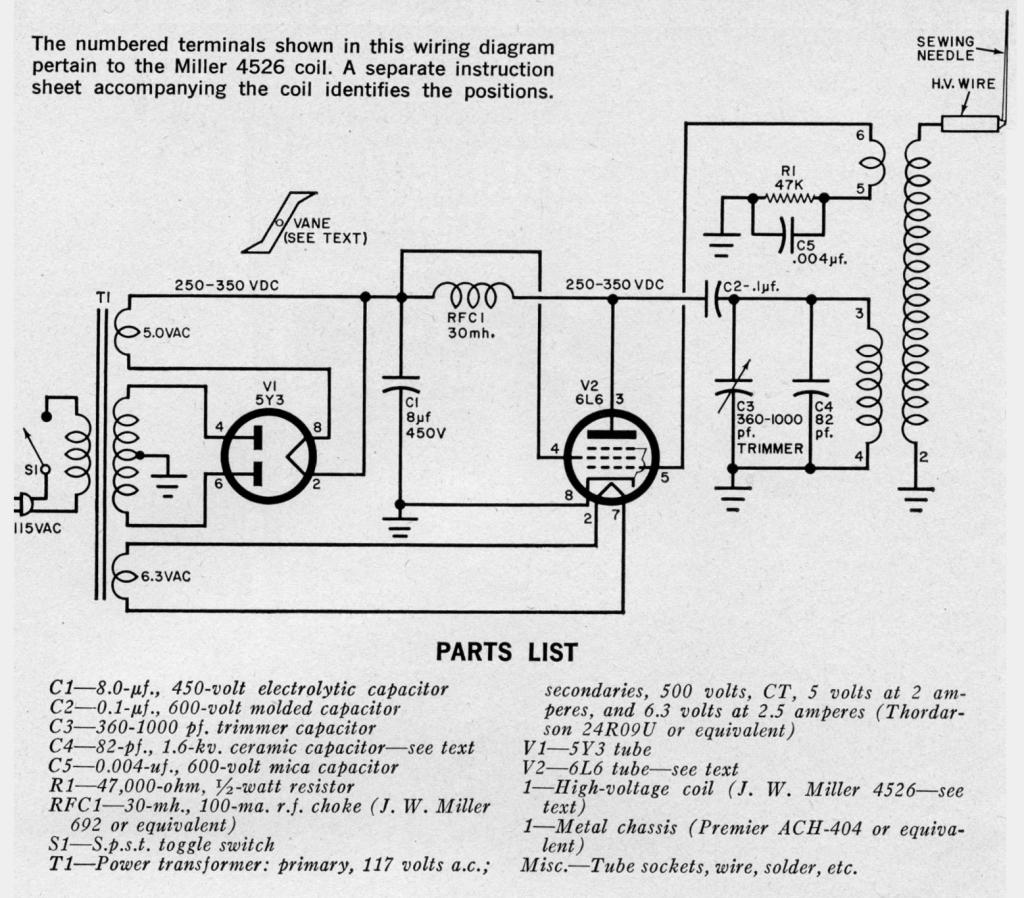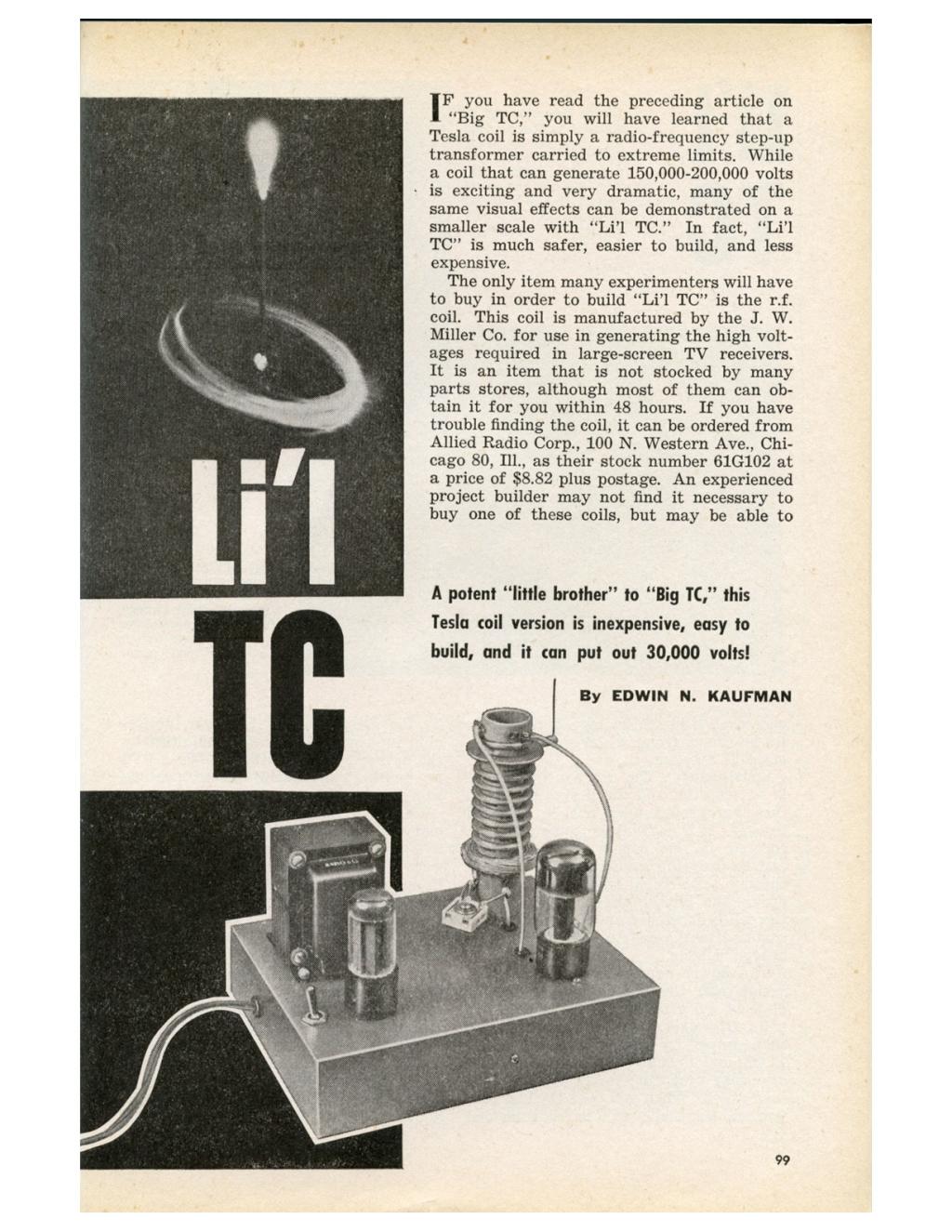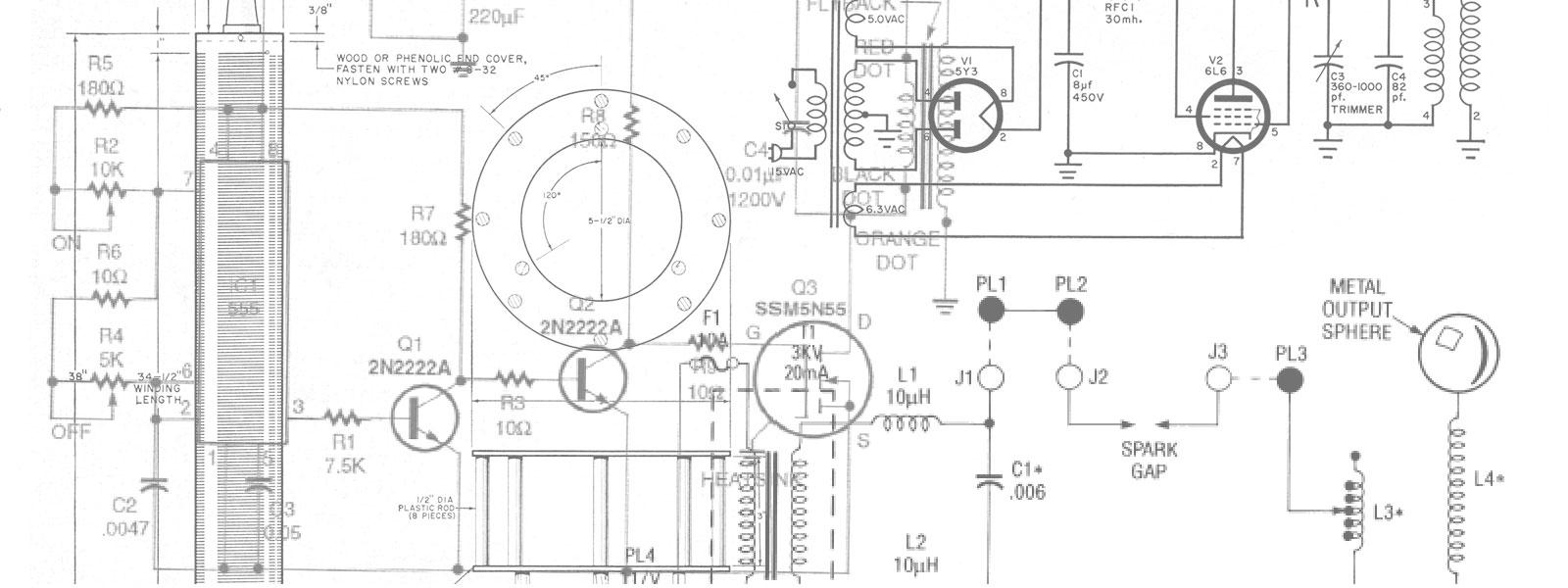
Plans
Li'l TC
A potent “little brother” to “Big TC,” this Tesla coil version is inexpensive, easy to build, and it can put out 30,000 volts!
If you have read the preceding article on “Big TC,” you will have learned that a Tesla coil is simply a radio-frequency step-up transformer carried to extreme limits. While a coil that can generate 150,000-200,000 volts is exciting and very dramatic, many of the same visual effects can be demonstrated on a smaller scale with “Li'l TC.” In fact, “Li'l TC” is much safer, easier to build, and less expensive.
The only item many experimenters will have to buy in order to build “Li'l TC” is the r.f. coil. This coil is manufactured by the J. W. Miller Co. for use in generating the high voltages required in large-screen TV receivers. It is an item that is not stocked by many parts stores, although most of them can obtain it for you within 48 hours. If you have trouble finding the coil, it can be ordered from Allied Radio Corp., 100 N. Western Ave., Chicago 80, Ill., as their stock number 61G102 at a price of $8.82 plus postage. An experienced project builder may not find it necessary to buy one of these coils, but may be able to construct “Li'l TC” using a high-voltage transformer from a large-screen oldstyle TV receiver.
Construction. The mechanical layout is not critical, and the design shown in the photographs need not be followed exactly. It is convenient to place the r.f. coil off in one corner of the chassis and to drop the connecting leads to V2 through grommeted holes in the chassis deck. The high-voltage output lead of the coil is shortened and a sewing needle soldered to the end to show “point discharge” effects.
The power supply is of conventional design and the B-plus applied to the plate of V2 can range from 250 to 500 volts. However, 250 - 350 volts is more than ample for an output of between 12,000 and 15,000 volts. The output will also vary according to the type of tube used at V2. When you open the coil box, you will see that a 6Y6 is recommended by the manufacturer. However, noticeably improved effects were obtained by the author by substituting a 6L6. A 6V6 or another equivalent power pentode would do in a pinch.
Capacitor C3 is used to tune the primary of the h.v. coil. For convenience, two bus-bar leads about 1" in length were soldered to the capacitor and used to support it in mid-air. The remaining components are scattered around below the chassis deck.
Firing Up Li'l TC. When used in a TV receiver, the high voltage generated by this coil/oscillator arrangement is rectified and filtered. It is then considerably more dangerous than the unfiltered r.f. generated by Li'l TC. Nevertheless, Li'l TC should be treated with respect, for the voltage can puncture the skin of a finger, although high-frequency voltages usually tend to flow relatively harmlessly along the skin's surface.
After double-checking your wiring, turn on the a.c. power and permit the two tubes to warm up. Take an insulated screwdriver — something like a long alignment tool — and adjust C3 for a brush discharge from the needle point. If you do not have enough range in C3 to tune through the maximum discharge, change the value of C4 — add more capacitance at C4 if the plates of C3 are tightly meshed; use less if C3's are too loose. You can set C3 for maximum discharge by listening to the sound of the brush effect — tune for a clean high-pitched hiss and not a sputtering sound.
The brush discharge from Li'l TC will be about 1" in height and can be seen best in a dimly lighted room. Actually, a brush corona will appear at any sharp edge on the output lead, so be careful to round out the soldered connections between the eye of the needle and the shortened h.v. lead.
Ionic Propulsion Vane. Probably the most impressive demonstration of a Tesla coil is the ionic propulsion vane. You can make one for Li'l TC by cutting out the general pattern shown in the diagram above. Make the over-all length of the vane about 1" to 1 1/2". Cut the vane from aluminum foil and puncture the center so that the vane is balanced. Use one of your wife's extra beads as a bearing by slipping it on the upright needle. Then drop the vane over the needle so that it rests on the bead and can rotate freely. Put a piece of cork or rubber on the tip of the needle to stop the vane from picking up so much speed that it spins right off the needle.
The photograph on the first page of this article is a two-second time exposure (slightly enlarged) showing what the brush corona discharge and rotating vane should look like.
